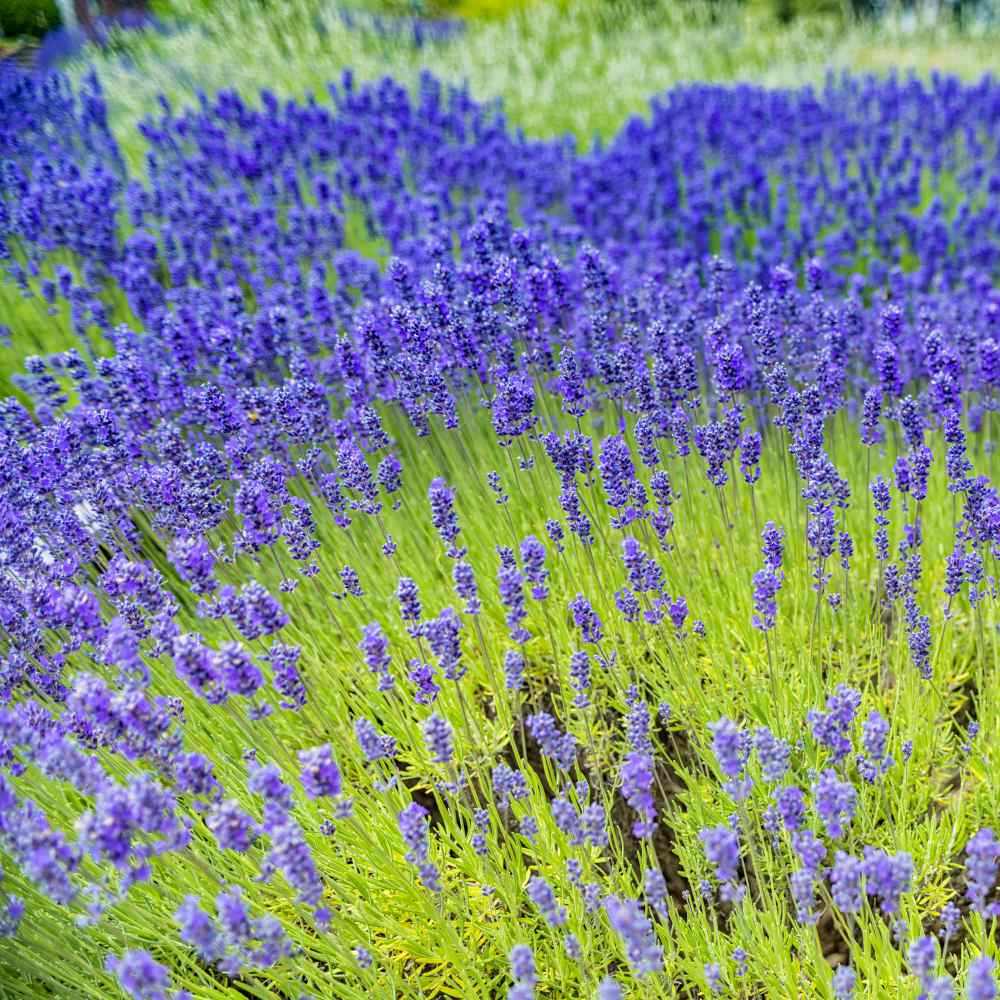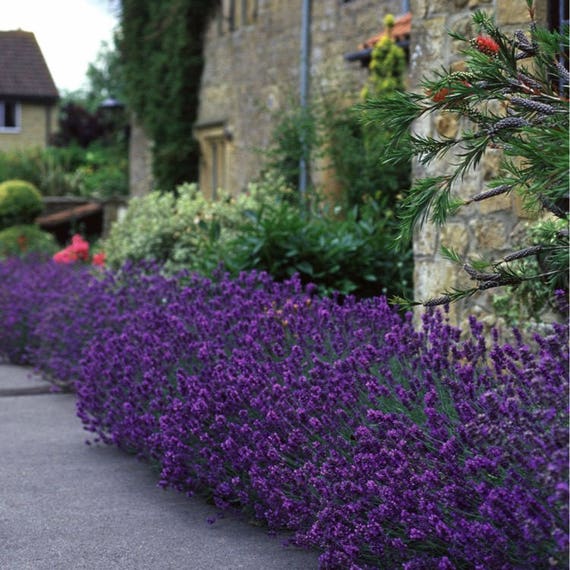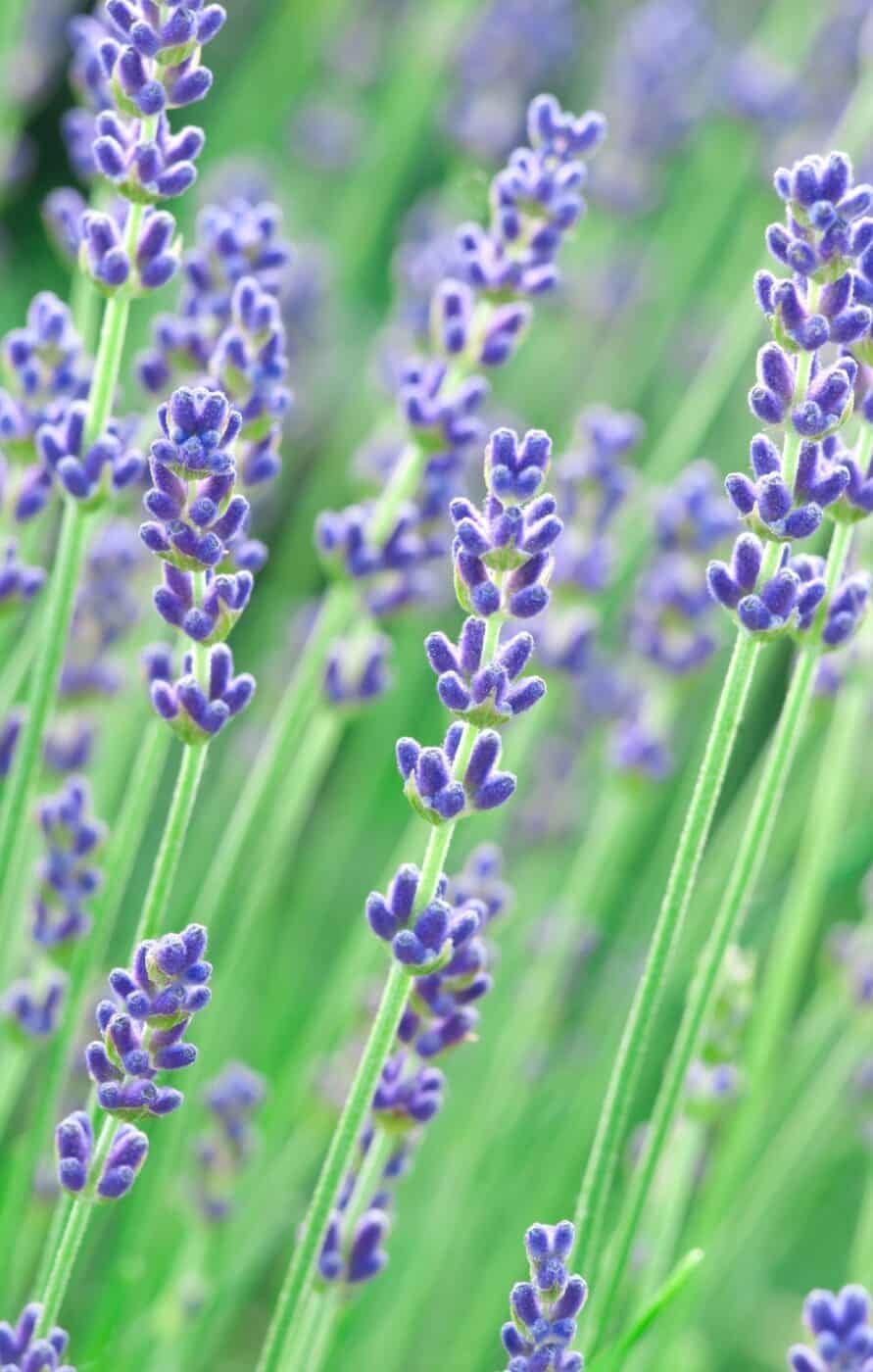What is Munstead Lavender and Why is it a Gardener’s Favorite?
Munstead Lavender is a popular and versatile flowering plant that has been a favorite among gardeners for centuries. This lovely lavender variety is known for its compact growth habit, reaching a height of approximately 12-18 inches, making it an ideal choice for small gardens, containers, and borders. Its delicate, pale purple flowers are highly fragrant and bloom from mid-summer to early fall, attracting pollinators and adding a touch of elegance to any garden setting.
One of the reasons Munstead Lavender is so well-liked is its low-maintenance requirements. It is relatively easy to care for and can thrive in a variety of conditions, including full sun to partial shade and well-drained soil. This adaptability makes it an excellent choice for gardeners of all skill levels, from beginners to experienced horticulturists.
In addition to its beauty and ease of care, Munstead Lavender is also a perennial plant, meaning it comes back year after year. This is a significant advantage for gardeners who want to create a sustainable and long-lasting garden design. But, is Munstead Lavender a perennial in all climates and conditions? We’ll explore this question in more detail later in this article.
Overall, Munstead Lavender is a charming and versatile plant that can add a touch of sophistication and beauty to any garden. Its compact growth habit, fragrant flowers, and low-maintenance requirements make it an excellent choice for gardeners who want to create a stunning and sustainable garden design.
Is Munstead Lavender a Perennial? Understanding its Life Cycle
One of the most common questions about Munstead Lavender is whether it is a perennial or annual plant. To answer this question, it’s essential to understand the difference between perennials and annuals. Perennials are plants that live for more than two years, typically regrowing new growth from the same roots each year. Annuals, on the other hand, complete their life cycle within a year, germinating, growing, producing seeds, and dying all within a single growing season.
Munstead Lavender is indeed a perennial plant, belonging to the Lavandula genus. As a perennial, it has a life cycle that spans multiple years, with new growth emerging from the same roots each year. In ideal conditions, Munstead Lavender can live for 5-7 years or more, making it a long-term addition to any garden.
Understanding the life cycle of Munstead Lavender is crucial for providing the right care and maintenance. As a perennial, it requires regular pruning to promote healthy growth and prevent woody stems. It also needs protection from extreme temperatures, moisture, and pests to ensure its longevity.
In terms of hardiness, Munstead Lavender is relatively robust, tolerating temperatures as low as -10°C (14°F) and as high as 30°C (86°F). However, it prefers well-drained soil and full sun to partial shade, making it an excellent choice for gardens with Mediterranean or temperate climates.
So, is Munstead Lavender a perennial? The answer is yes, and understanding its life cycle is key to providing the right care and maintenance for this beautiful and low-maintenance plant.
How to Grow Munstead Lavender: Tips for Success
Growing Munstead Lavender is relatively easy, but it does require some specific conditions to thrive. To start, choose a location with full sun to partial shade, as Munstead Lavender loves sunlight. Make sure the soil is well-drained, as this plant is susceptible to root rot if the soil is too moist.
When it comes to soil preparation, Munstead Lavender prefers a slightly alkaline soil with a pH between 6.5 and 7.5. You can test your soil pH and amend it if necessary. Add some organic matter like compost or well-rotted manure to improve soil fertility and drainage.
Watering is also crucial when growing Munstead Lavender. Water the plant regularly during the first growing season, but make sure not to overwater. Established plants are drought-tolerant, but they will still require occasional watering during prolonged dry spells.
Fertilization is not necessary for Munstead Lavender, but a balanced fertilizer can promote healthy growth and flowering. Apply a low-nitrogen fertilizer in the spring, following the manufacturer’s instructions.
When planting Munstead Lavender, space the plants about 12-18 inches apart to allow for good air circulation and growth. You can also grow Munstead Lavender in containers, using a well-draining potting mix and a container that is at least 6-8 inches deep.
By following these tips, you should be able to grow healthy and thriving Munstead Lavender plants. Remember to prune your plants regularly to promote new growth and prevent woody stems. With proper care, Munstead Lavender can be a beautiful and low-maintenance addition to any garden.
Munstead Lavender Care: Pruning, Propagation, and Pest Control
Proper care is essential to keep Munstead Lavender healthy and thriving. One of the most important aspects of Munstead Lavender care is pruning. Pruning helps to promote new growth, prevent woody stems, and encourage blooming. Prune your Munstead Lavender plants in the spring, removing any dead or damaged stems. Cut back the stems to about 6-8 inches from the ground, making sure to leave some new growth intact.
Propagation is another important aspect of Munstead Lavender care. Munstead Lavender can be propagated through cuttings, division, or seed. Take cuttings from the tips of the stems in the spring or summer, and plant them in a pot filled with well-draining soil. Keep the soil moist and warm until the cuttings root. Division can be done in the spring or fall, by carefully digging up the entire plant and separating the roots. Replant the separated sections in well-draining soil.
Pest control is also crucial when growing Munstead Lavender. Common pests that can affect Munstead Lavender include aphids, whiteflies, and spider mites. Use neem oil or insecticidal soap to control infestations. Regularly inspect your plants for signs of pests, and take action quickly to prevent the infestation from spreading.
Diseases can also affect Munstead Lavender, including root rot and leaf spot. Root rot is caused by overwatering, so make sure to avoid watering your plants too much. Leaf spot is caused by fungal infections, and can be treated with fungicides. Remove any infected leaves or stems to prevent the disease from spreading.
By following these care tips, you can keep your Munstead Lavender plants healthy and thriving. Remember to prune regularly, propagate new plants, and control pests and diseases to ensure the longevity of your Munstead Lavender.
Munstead Lavender in the Garden: Companion Planting and Design Ideas
Munstead Lavender is a versatile plant that can be used in a variety of garden settings, from borders to containers. One of the best ways to showcase Munstead Lavender is through companion planting, where it is paired with other plants that complement its growth and fragrance.
Some good companion plants for Munstead Lavender include rosemary, thyme, and oregano. These herbs have similar growing conditions and can help to repel pests that might target Munstead Lavender. Other plants that complement Munstead Lavender include coneflowers, black-eyed Susans, and bee balm. These plants attract pollinators and add a pop of color to the garden.
In terms of design ideas, Munstead Lavender can be used in a variety of ways. It can be planted in a border, where it can be paired with other plants that complement its growth and fragrance. It can also be used in containers, where it can be paired with other plants that have similar growing conditions. Munstead Lavender can also be used in a rock garden, where it can be paired with other plants that thrive in well-draining soil.
When designing a garden with Munstead Lavender, it’s essential to consider the plant’s growing conditions. Munstead Lavender prefers well-draining soil and full sun to partial shade. It’s also essential to consider the plant’s mature size, which can range from 12-18 inches tall and 18-24 inches wide.
Some creative ways to use Munstead Lavender in the garden include creating a lavender hedge, where the plants are pruned to form a compact hedge. Munstead Lavender can also be used in a sensory garden, where it can be paired with other plants that stimulate the senses. It can also be used in a pollinator garden, where it can be paired with other plants that attract pollinators.
Munstead Lavender Uses: From Crafts to Cuisine
Munstead Lavender is a versatile plant that can be used in a variety of ways, from crafts to cuisine. One of the most popular uses of Munstead Lavender is in potpourri, where its fragrant flowers and foliage are used to create a pleasant and calming scent.
Munstead Lavender can also be used in crafts, such as wreath-making and floral arrangements. Its delicate flowers and foliage can be used to create beautiful and fragrant decorations for the home.
In addition to its uses in crafts and potpourri, Munstead Lavender can also be used in cooking. Its flowers and foliage can be used to make a variety of dishes, such as lavender shortbread cookies, lavender lemonade, and lavender honey.
Here is a simple recipe for lavender shortbread cookies:
Ingredients:
1 cup butter, softened
1/2 cup granulated sugar
2 tablespoons dried Munstead Lavender flowers
2 cups all-purpose flour
1/2 teaspoon salt
Instructions:
Preheat oven to 300°F (150°C). Line a baking sheet with parchment paper.
In a large bowl, cream together the butter and sugar until light and fluffy. Add the dried Munstead Lavender flowers and mix until well combined.
In a separate bowl, whisk together the flour and salt. Add the dry ingredients to the wet ingredients and mix until a dough forms.
Roll out the dough on a floured surface to about 1/4 inch thickness. Cut into desired shapes using a cookie cutter.
Place the cookies on the prepared baking sheet and bake for 18-20 minutes, or until lightly golden.
Allow the cookies to cool on the baking sheet for 5 minutes, then transfer to a wire rack to cool completely.
Troubleshooting Common Issues with Munstead Lavender
While Munstead Lavender is a relatively low-maintenance plant, there are some common issues that may arise when growing it. One of the most common problems is root rot, which can occur if the soil is too moist or if the plant is not receiving enough sunlight.
To prevent root rot, make sure to plant Munstead Lavender in well-draining soil and provide it with full sun to partial shade. Also, avoid overwatering, as this can exacerbate the problem.
Another common issue with Munstead Lavender is leaf spot, which can be caused by fungal infections. To prevent leaf spot, make sure to remove any infected leaves or stems, and treat the plant with a fungicide if necessary.
Pest infestations can also be a problem when growing Munstead Lavender. Common pests that may affect the plant include aphids, whiteflies, and spider mites. To control these pests, use neem oil or insecticidal soap, and make sure to remove any infested leaves or stems.
In addition to these common issues, Munstead Lavender may also be susceptible to other problems, such as powdery mildew or rust. To prevent these issues, make sure to provide the plant with good air circulation and avoid overwatering.
By being aware of these common issues and taking steps to prevent them, you can help to ensure the health and well-being of your Munstead Lavender plant.
Conclusion: Why Munstead Lavender is a Must-Have for Any Garden
Munstead Lavender is a beautiful and low-maintenance plant that is perfect for any garden. With its compact growth habit, fragrant flowers, and attractive foliage, it is a great addition to any garden border, container, or landscape.
In addition to its beauty, Munstead Lavender is also a perennial plant, meaning it will come back year after year with proper care. This makes it a great investment for any gardener, as it will provide years of enjoyment and beauty.
Whether you are a seasoned gardener or just starting out, Munstead Lavender is a great choice for any garden. It is easy to grow and maintain, and can thrive in a variety of conditions. Plus, its fragrance and beauty make it a great addition to any garden.
So why not give Munstead Lavender a try? With its many benefits and charms, it is a must-have for any garden. Whether you are looking to add some beauty and fragrance to your garden, or just want a low-maintenance plant that will thrive with minimal care, Munstead Lavender is a great choice.
In conclusion, Munstead Lavender is a beautiful and low-maintenance plant that is perfect for any garden. Its compact growth habit, fragrant flowers, and attractive foliage make it a great addition to any garden border, container, or landscape. Plus, its perennial nature and ease of care make it a great investment for any gardener.






